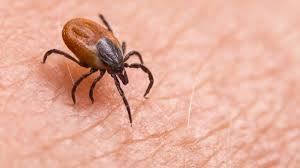
Tick-borne encephalitis (TBE) is a viral infectious disease involving the central nervous system.
It is caused by tick-borne encephalitis virus, a member of the genus Flavivirus in the family Flaviviridae.
The disease most often manifests as meningitis, encephalitis or meningoencephalitis, but myelitis and spinal paralysis can occur.
In about one third of cases, cognitive dysfunction, persists for a year or more.
The number of reported cases has been increasing.
TBE infects a range of hosts: ruminants, birds, rodents, carnivores, horses, and humans.
TBE can also be spread from animals to humans, with ruminants and dogs providing the principal source of infection for humans.
TBE incubation period is approximately one week (range: 4–28 days) from tick bite exposure.
Initially there are non-specific symptoms of fever, malaise, headache, nausea, vomiting and myalgias that persist for about 5 days.
After a week of being asymptomatic
some of the infected patients develop neurological symptoms:meningitis, encephalitis/meningoencephalitis or myelitis.
In patients who develop neurologic disease, approximately one third of the patients will have long-term symptoms of headache, concentration difficulties, impaired memory and other cognitive dysfunctions, persisting for a year or more.
Mortality in TBE depends on the subtype of the virus: European subtype mortality rates are 0.5% to 2% for people who develop neurological disease.
Three virus sub-types also exist: European or Western tick-borne encephalitis virus (transmitted by Ixodes ricinus), Siberian tick-borne encephalitis virus (transmitted by I. persulcatus), and Far-Eastern tick-borne encephalitis virus, formerly known as Russian spring summer encephalitis virus (transmitted by I. persulcatus).
Sheep ticks (Ixodes ricinus), transmit the disease.
It is transmitted by the bite of several species of infected woodland ticks, including Ixodes scapularis, I. ricinus and I. persulcatus, or rarely, through the non-pasteurized milk of infected cows.
Infection acquired through goat milk consumed as raw milk or raw cheese has been documented.
Diagnosis:
Detection of specific IgM and IgG antibodies in patients sera combined with typical clinical signs.
In more complicated situations, such as after vaccination, testing for presence of antibodies in cerebrospinal fluid may be necessary.
Prevention: tick-bite prevention, tick checks and specific prophylaxis in the form of a vaccination.
Tick-borne encephalitis vaccines are effective and available in many disease endemic areas and in travel clinics.
Treatment:
No specific antiviral treatment exists for TBE.
Symptomatic brain damage requires hospitalization and supportive care.
Anti-inflammatory drugs, such as corticosteroids, may be considered.
Tracheal intubation and respiratory support may be necessary.
Epidemiology Edit
The disease is most common in Central and Eastern Europe, and Northern Asia.
For Europe, the estimated risk is roughly 1 case per 10,000 human-months of woodland activity.
In some regions of Russia and Slovenia, the prevalence of cases can be as high as 70 cases per 100,000 people per year.
Travelers to endemic regions do not often become infected.
